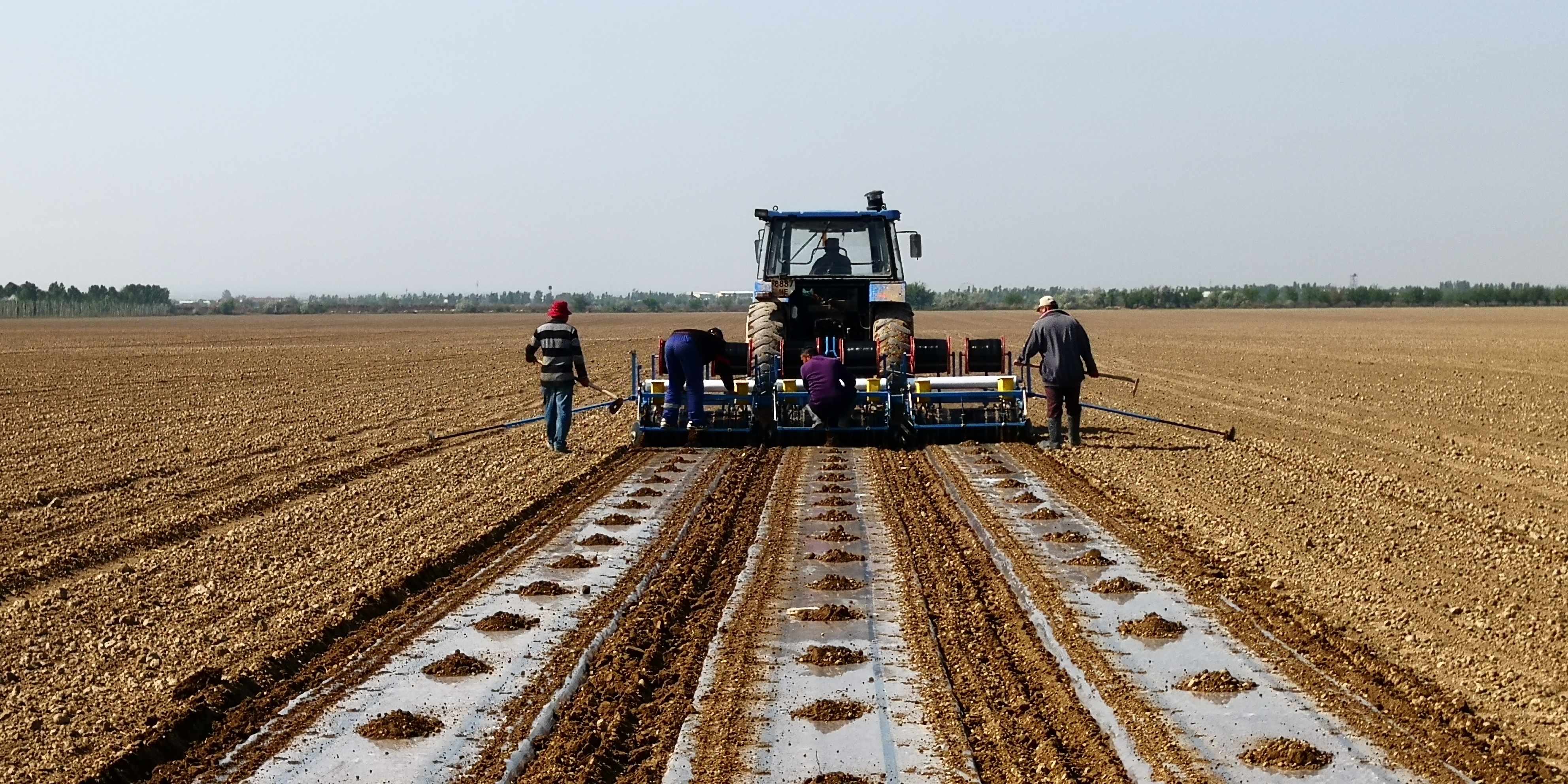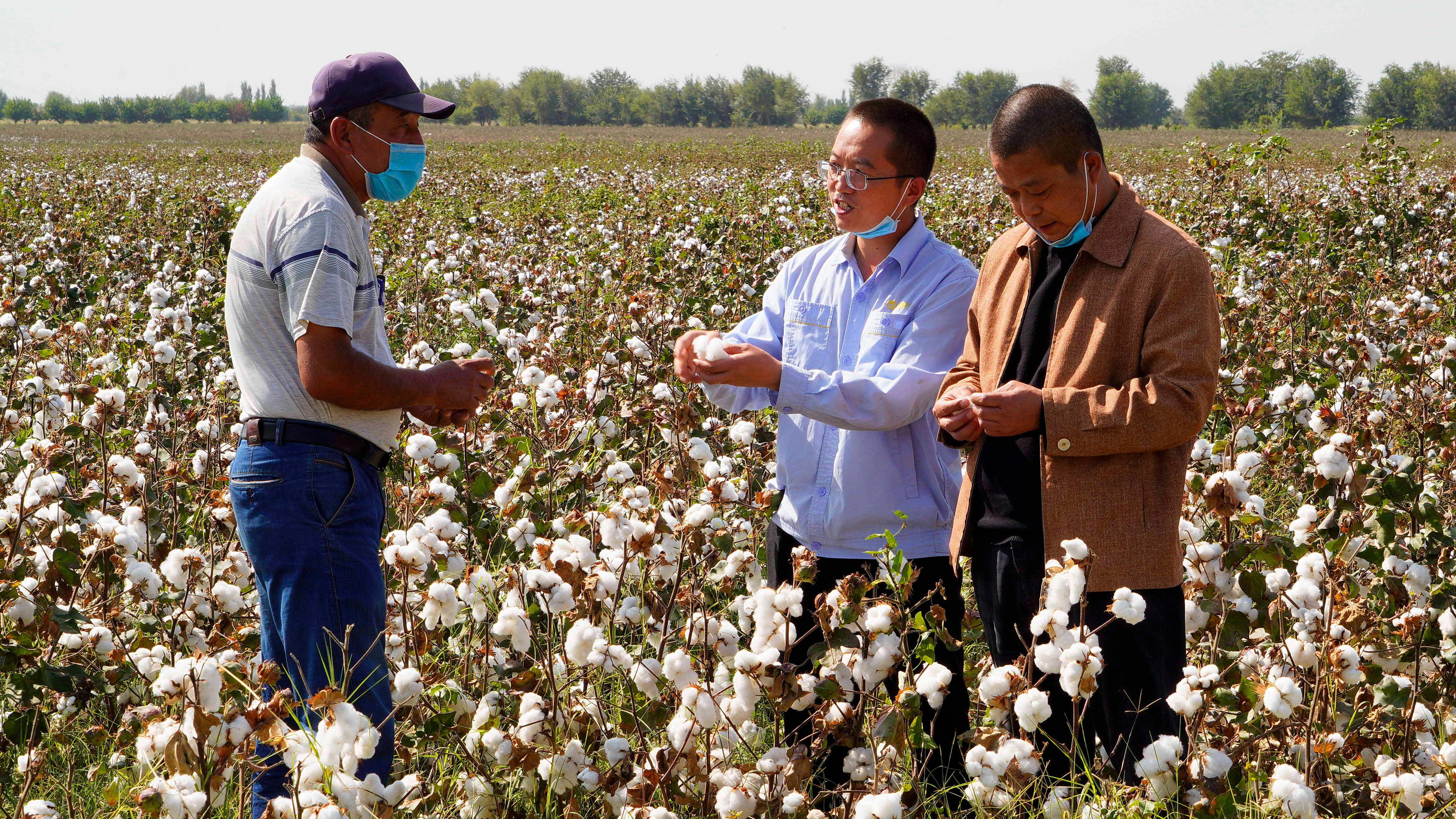As the Belt and Road Initiative (BRI) continues to advance, green development has become the key to international cooperation. Over recent years, China and Central Asian countries have worked closely to promote cooperation in the field of ecological and environmental protection.
China envisioned the BRI as a framework connecting countries around the world to promote economic development and inter-regional connectivity, involving transportation, energy and telecommunications infrastructure, industrial capacity and technical capacity building. At a time when the global environment is under threat, the BRI is also a way to connect countries via green development for sustainability and healing the environment.
The introduction of China's advanced drip irrigation technology to the five Central Asian countries to reduce the use of water for cotton production is one of the examples.
Since 2001, Xinjiang Tianye Co., Ltd, China's largest water-saving facility development and production company affiliated to the Eighth Agricultural Division of Xinjiang Production and Construction Corps, started the construction of modern irrigation technology demonstration farms in the five countries, covering an area of more than 3,333 hectares to date.
From preliminary land planning and design to the application of water-saving drip irrigation technology, to the sowing and fertilization, and to the later maintenance and management, Central Asian countries has saved water for cotton production, and increased cotton yield by 30 to 100 percent, according to Yang Kaiwen, a senior engineer of the company.

Local farmers grow cotton on China's demonstration farm with an area of 120 hectares in Uzbekistan, 2020. /Photo provided by Yang Kaiwen
Local farmers grow cotton on China's demonstration farm with an area of 120 hectares in Uzbekistan, 2020. /Photo provided by Yang Kaiwen
Adopted by the Chinese government as a demonstration program for international agricultural cooperation under the BRI, the company set up a cotton irrigation farm in 2020 to promote water-saving irrigation technology in Uzbekistan, Central Asia's largest cotton producer and the world's eighth largest.
Cotton production is a pillar of Uzbekistan's economy. Cotton, as a water intensive crop, requires about 7.5 megaliters per hectare in the country. However, local flood irrigation and furrow irrigation mean a lot of water resources cannot be fully used, and the lack of water resources has become one of the main reasons for cotton yield reduction in recent decades.
With drip irrigation technology under plastic film mulch, less water is evaporated and less water is required. After 10 months of growing cotton on the farm, water use was 37.5 percent lower than it would have been without the new technology. At the same time, the cotton yield increased from more than 100 kilograms per 0.07 hectares to more than 200 kilograms per 0.07 hectares, an increase of more than 40 percent. It also saved 40 percent of mineral fertilizers.

Chinese experts exchange cotton planting experience with local farmers in Uzbekistan, 2020. /Photo provided by Yang Kaiwen
Chinese experts exchange cotton planting experience with local farmers in Uzbekistan, 2020. /Photo provided by Yang Kaiwen
Joint efforts during the COVID-19 pandemic
When Yang Kaiwen, who is in charge of the project, recalled the cooperation in Uzbekistan in 2020, he thought cotton yields could have been improved even more.
As COVID-19 spread in 2020, the cooperation between China and Uzbekistan faced a lot of challenges.
At that time, due to the impact of the pandemic, the number of Chinese experts sent to Uzbekistan was reduced, and cotton planting equipment, fertilizers and pesticides were insufficient. "Basically, we grow cotton under whatever conditions the local farmers have," said Yang.
"Our partners in Uzbekistan have given us the greatest support, and China has been committed to bringing about good results in local cotton production as soon as possible," he added.
Although the pandemic has made the project uncertain, with the continuous efforts of the two governments, the persistent efforts of Chinese experts and the support and cooperation of local farmers, progress had been made.
On May 5, the World Health Organization declared the COVID-19 pandemic to be over as a global health emergency. Yang has some expectations about future cooperation with Central Asian countries.
"The demonstration farm was originally planned to cover an area of 400 hectares, but only 120 hectares have been completed due to the pandemic. We will continue to complete the original plan in the near future," Said Yang.

China's demonstration farm with an area of 120 hectares in Uzbekistan, 2020. /Photo provided by Yang Kaiwen
China's demonstration farm with an area of 120 hectares in Uzbekistan, 2020. /Photo provided by Yang Kaiwen
Governments' support for companies and farmers
In December 2018, Uzbekistan's President Shavkat Mirziyoyev signed a decree on urgent measures to create favorable conditions to use drip irrigation technology in cotton production across the country.
The local government provided subsidies of 8 million to 20 million Uzbekistan soms (about $959 to $2,396 in 2018) per hectare to cotton farmers to apply drip irrigation technology. At the same time, it also provided a "green channel" for imports, and tax reduction and exemption for the import of water-saving irrigation equipment and technology.
For the Chinese government, in addition to tax cuts on exports, it also guided companies to carry out learning and exchange activities. Under the guidance of China's Ministry of Science and Technology, the company has held several international training courses in both China and Central Asian countries on efficient water-saving irrigation technology, inviting agriculture-related people from Central Asian countries to China for learning exchange.
The vision of future cooperation
The company is not the only one promoting irrigation technology in Central Asian countries. There are many other Chinese companies and research institutes, such as Northwest Agriculture and Forestry University and Xinjiang Institute of Ecology and Geography under Chinese Academy of Sciences, which have set up demonstration farms in Central Asian countries like Kazakhstan and Uzbekistan.
Based on the advantageous natural conditions for growing cotton in Central Asian countries and China's adapted drip irrigation technology, Yang believes that future cooperation between China and Central Asian countries will lead to further agricultural progress.
(If you want to contribute and have specific expertise, please contact us at nature@cgtn.com.)